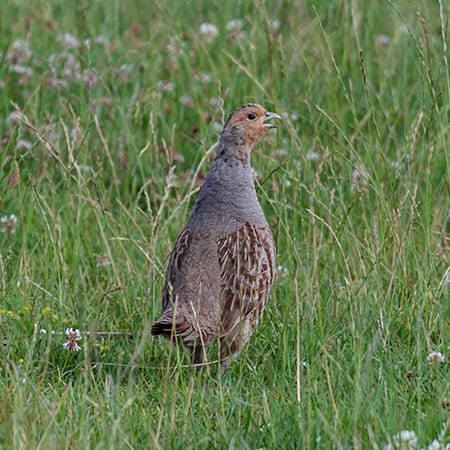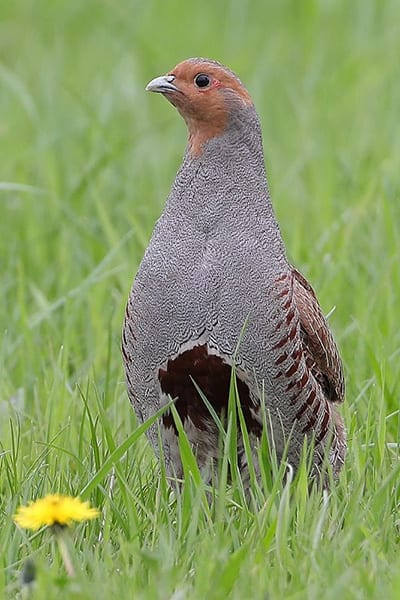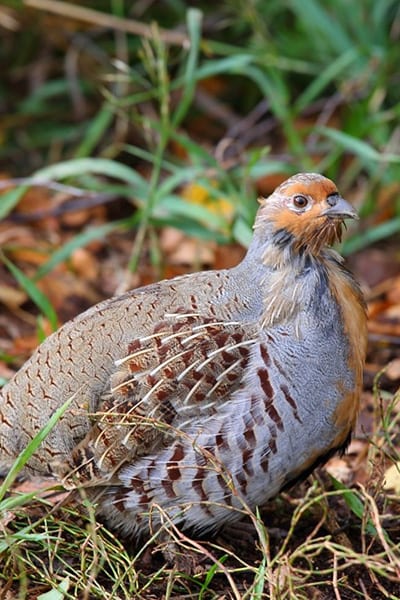BASC Species of the Month
January

Grey Partridge
BASC’s Dr Conor O’Gorman takes a look at his favourite bird species – the enigmatic grey partridge…
How to recognise them
Plump and roughly the size of a volleyball, most male grey partridge and some females have an obvious chestnut horseshoe shape on their greyish breast, with both sexes having an orange/brown hue to their faces.
Where they can be found
Typically found in open lowland farmland areas where there is a mix of farming types. Most easily spotted on stubble fields and grassland where you might see a pair or a group (called a covey).
Preferred habitat
Wild grey partridge like grassy areas not prone to flooding to make their nest in, especially when close to areas that offer high densities of the right types of insects for their chicks to forage in.
Any special characteristics
In January/February look out for grey partridge squabbling an hour before dusk when the coveys start to break up and pairs are being formed. Unpaired males will stand in a prominent position calling out for females and showing off their horseshoe patch while throwing caution to the wind in their frantic search for a mate.


Their conservation status
The wild population in the UK is in dire straits and has been in freefall over the last 50 years despite our best efforts to conserve them.
Any projects BASC is involved in which benefit/protect them
BASC members are helping to make a difference as part of BASC’s Green Shoots project. The Game and Wildlife Conservation Trust (GWCT) supports local partridge groups in various parts of the country, so if you want to try and re-establish a wild population, make sure you join a local group and take part in the GWCT partridge count scheme. You can also record your birds on BASC’s Green Shoots mapping programme.
Breeding information
Wild grey partridge pair up from January to March. The female makes a nest on the ground out of grass and it’s usually well hidden from view. The chicks are mobile immediately after they hatch, often a dozen or more of them. They’re only the size of bumble-bees and have massive appetites as they search for insects in their immediate surroundings. Both parents look after them diligently guiding their charges to the best feeding areas, protecting them from predators and brooding them to help them keep warm enough to survive.
Any other interesting information
Grey partridge are world record breakers! On average, the hen lays 15 eggs in the nest and some even lay 20+ eggs! That’s more than any other known bird species worldwide.
